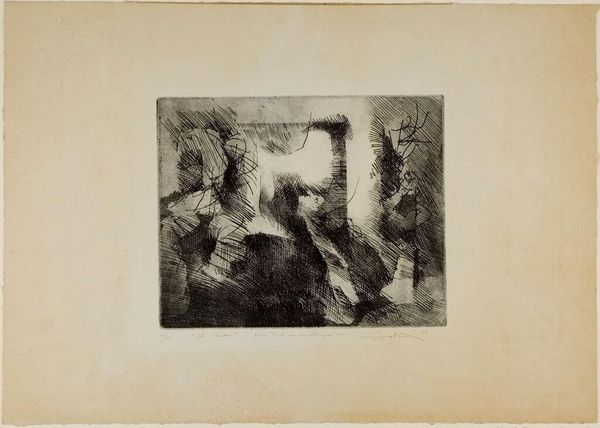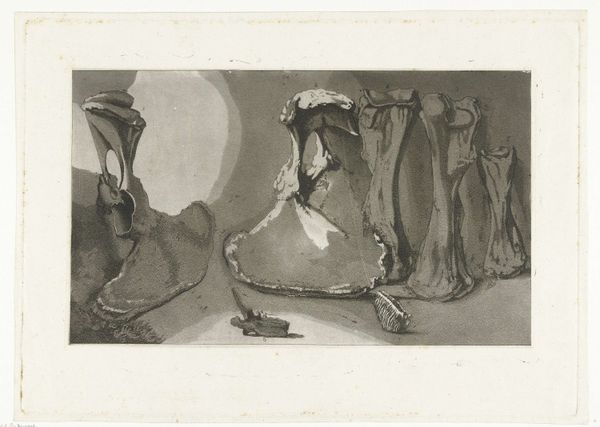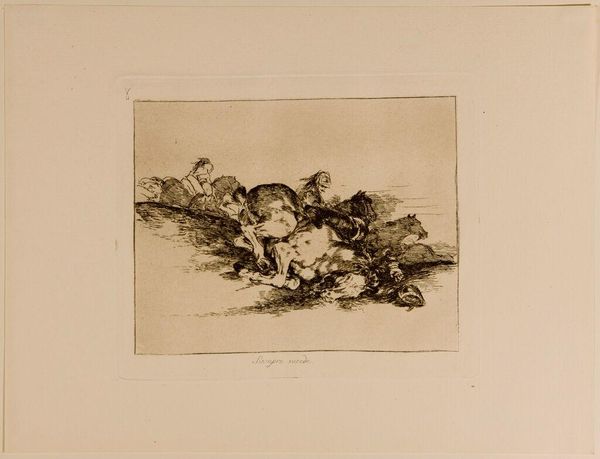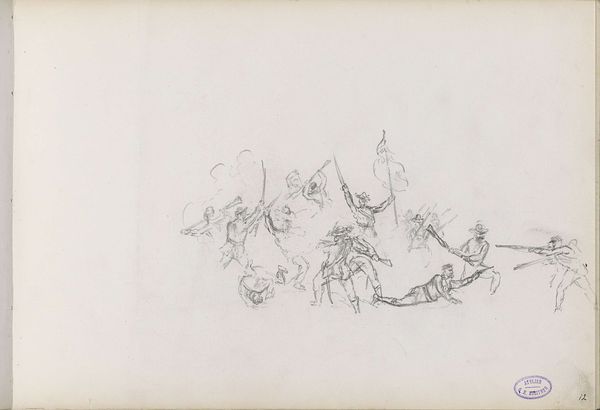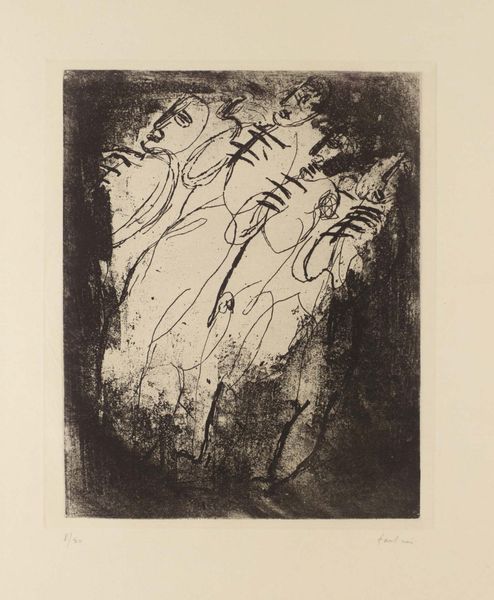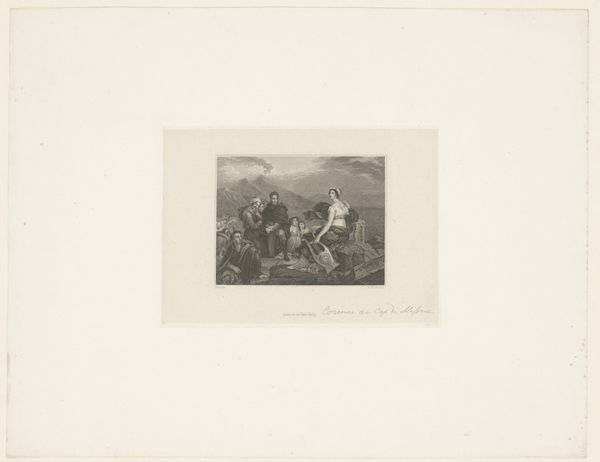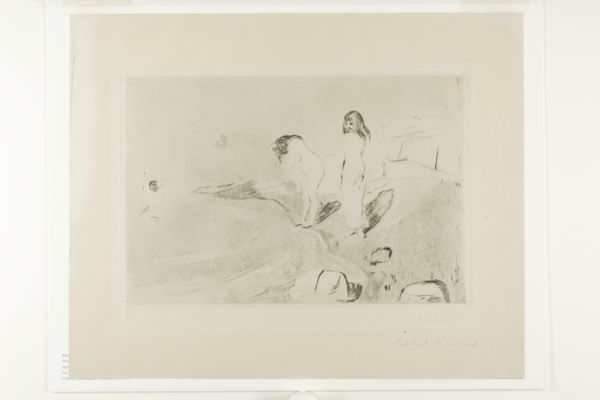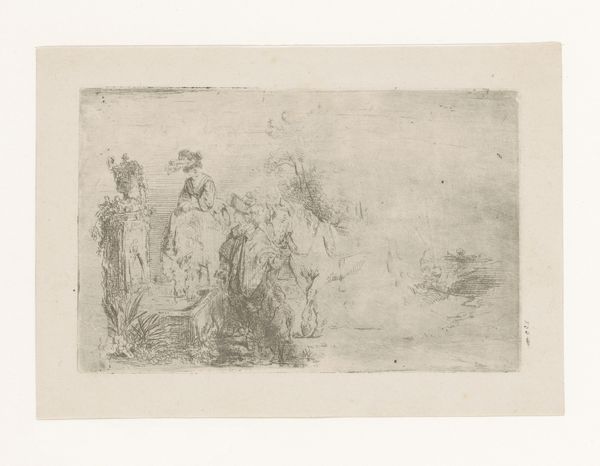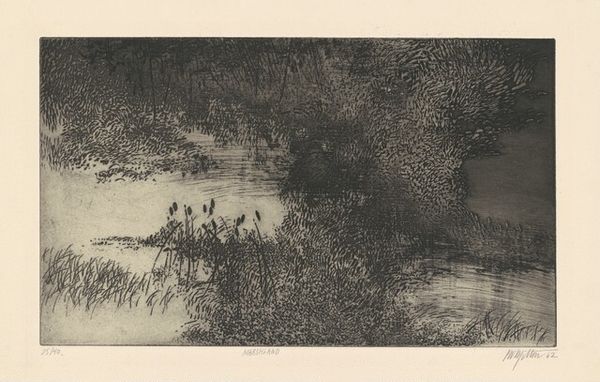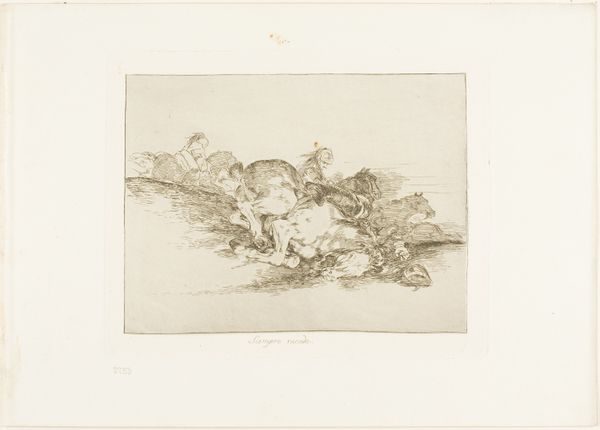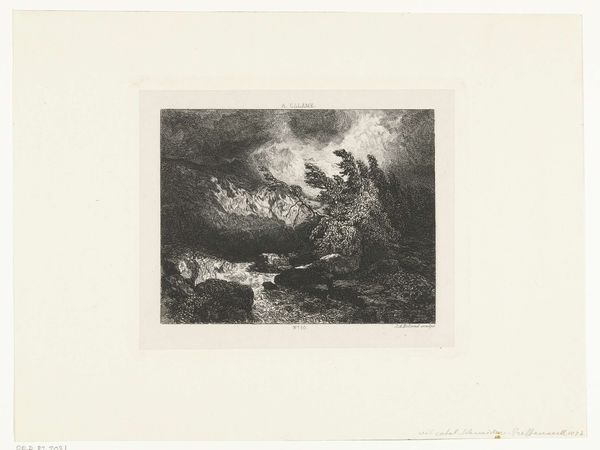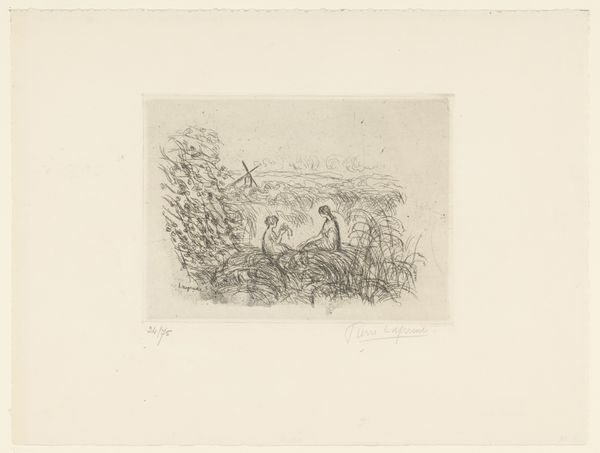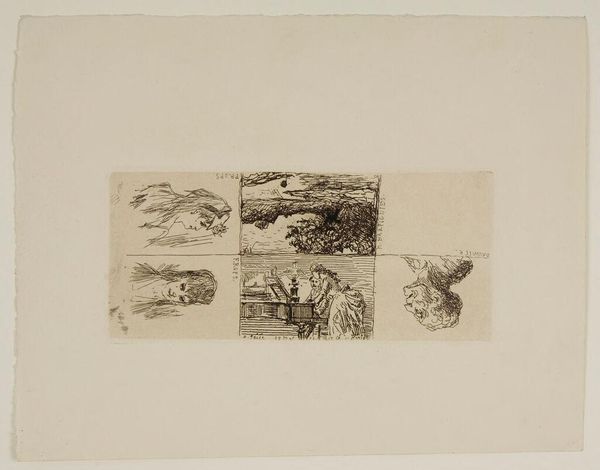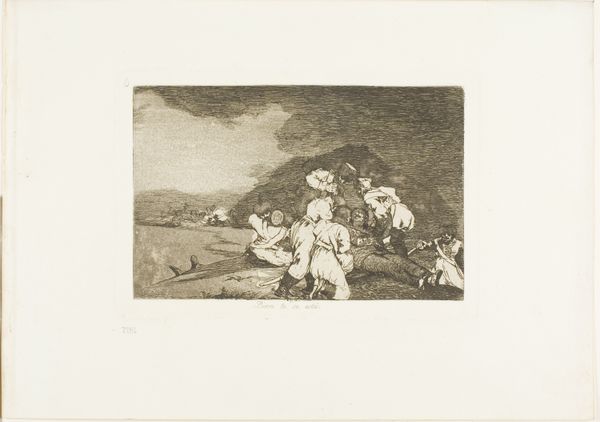
drawing, lithograph, print
#
drawing
#
lithograph
# print
#
landscape
#
figuration
#
line
#
monochrome
Dimensions: 9 1/2 x 14 in. (24.13 x 35.56 cm) (image)15 x 22 1/8 in. (38.1 x 56.2 cm) (sheet)19 3/4 x 24 1/2 in. (50.17 x 62.23 cm) (mat)
Copyright: No Copyright - United States
This is "Le Séminaire en Bretagne" by Jean-Émile Laboureur. It's an etching – a print made by biting lines into a metal plate with acid, inking it, and pressing it onto paper. The lines create a kind of woven texture across the surface, giving weight and substance to the figures and landscape. Look closely and you'll see how Laboureur used different densities of lines to create shadows and depth. This wasn't a quick process. Each print demanded careful work, and required a skilled hand to control the acid, the inking, and the pressure of the press. While etching has been a favored technique amongst artists since the Renaissance, its reliance on industrial materials like metal and acid reflects the shifting landscape of artistic production in the modern era. It's a fascinating blend of craftsmanship and industrial processes. This print reminds us that art is always connected to the world of labor, politics, and consumption.
Comments
minneapolisinstituteofart about 2 years ago
⋮
Francis Seymour Haden had an uneven relationship with his young brother-in-law James McNeill Whistler. When Haden etched this view of the river Thames in London-a subject then associated with Whistler-the two were on good terms. Each was recognized for the excellence of his art, and they seemed supportive of each other's successes. In time, however, their relationship grew tainted with rivalry and petty jealousies centered on artistic recognition. In 1867 there was a final break; Haden accused Whistler of immorality, and Whistler threw Haden through the glass window of a Paris restaurant.
Join the conversation
Join millions of artists and users on Artera today and experience the ultimate creative platform.
